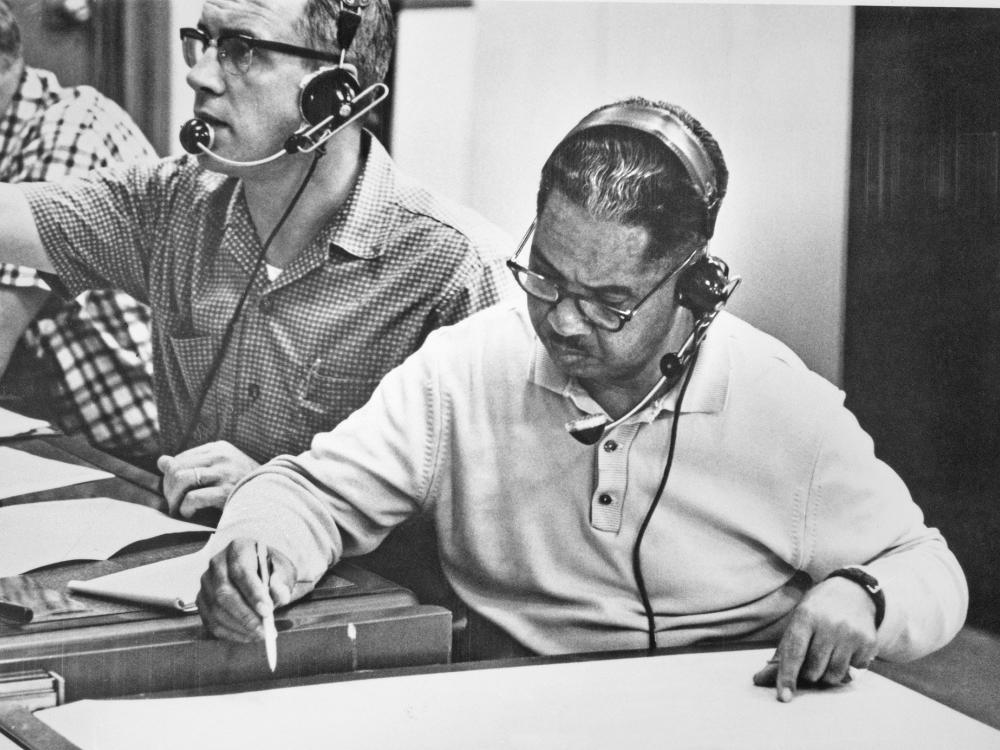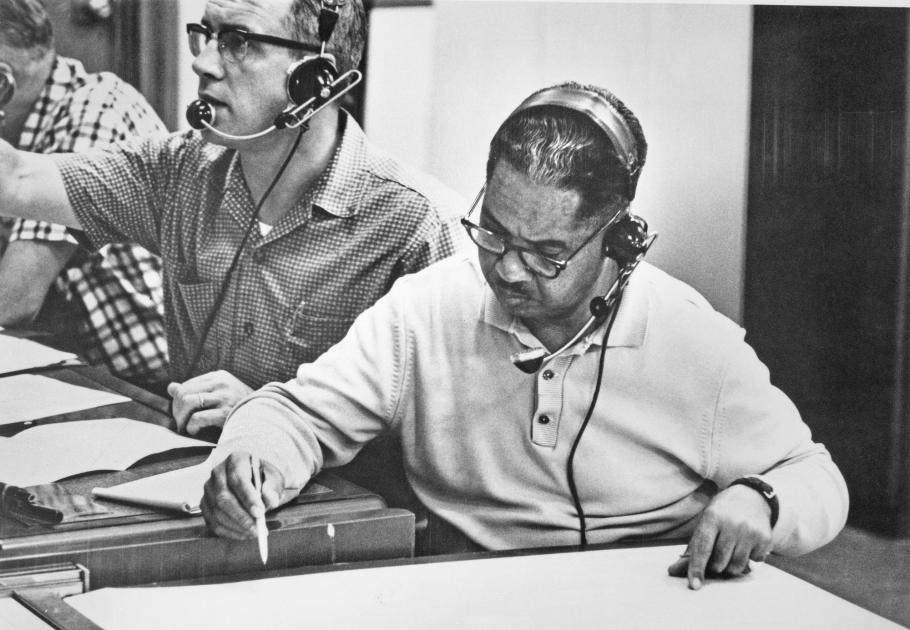
Vance Marchbanks' Contribution to Public Health Policy on Sickle Cell Disease
Feb 27, 2015
Dr. Vance Marchbanks, Jr. is famous in both the black history and aerospace history communities for his accomplishments as one of the first in his field. He was one of two black MDs to complete the United States Army Air Corps School in Aerospace Medicine at the beginning of World War II. His fame continued through his association with the 99th and 301st Fighter Groups, who later became known as the Tuskegee Airmen. He served as their flight doctor during the war. His fame among the black community continued through the early years of the American Mercury space program when he was detailed to the National Aeronautics and Space Administration (NASA) to monitor the health of John Glenn in orbit from a listening station in Kano, Northern Nigeria. Even after he retired from the Air Force as a colonel, Marchbanks' fame rebounded with each new accomplishment as an employee at Hamilton Standard, where he worked on the life support systems for the Apollo program. Nevertheless, one of Vance Marchbanks' greatest accomplishments was less frequently heralded. During the late 1970s and early 1980s, he used his considerable political and personal clout to challenge the U.S. Air Force on one of its medical dogmas.
Flight surgeon Vance H. Marchbanks Jr. played a key role in John Glenn’s historic spaceflight in Friendship 7 in 1962. He served on the flight control team in Kano, Nigeria.
Sickle Cell Disease (SCD) gained its name from its initial medical identification in 1910. A young doctor coined the term after examining a blood sample from a patient who had complained of both chronic and acute pain and anemia. Instead of the round donut shaped red bloods cells that he expected, the doctor saw cells that were shaped like sickles, a hand-held agricultural tool with a curved blade. The disease that he described had existed for thousands of years under various local names among people in Africa, the Mediterranean, and the Near East—largely in regions where Malaria is endemic. It was not until the late 1940s and early 1950s that the genetic nature of the disease began to be clear to doctors in the U.S. and Britain. In 1949, two articles appeared independently showing conclusively that SCD was an inherited, recessive gene. During the 1950s, it became possible to screen for SCD. This was a life-saver for those who inherited two copies of the gene and the ability to identify those who carried single copies of the gene made genetic counseling possible for SCD. Carrying a single copy of the gene was dubbed as having Sickle Cell Trait (SCT). Once scientists had identified the molecular expression of SCD, they sought to identify the causes of the periodic acute episodes like the ones that the 1910 patient had suffered. Looking at the anecdotal evidence, scientists surmised that stress and hypoxia caused attacks. Doctors further speculated that even those who carried a single copy of the gene could be subject to sickle cell attacks. The United States Air Force (USAF), using an overabundance of caution, acquiesced to preliminary hypotheses of biologists and geneticists and declared that no pilot-candidate with the single gene for SCD and known as having Sickle Celt Trait would be allowed to participate in any altitude duties. They argued that the limited medical knowledge concerning the effects of stress and the environment on individuals with SCT justified this action. The result was that any man screened as having SCT could not become a pilot. What had been characterized as a caution within medical circles had become USAF doctrine. The doctrine became public in 1979, when a candidate to the Air Force Academy with SCT was dismissed from the academy because of his genetic trait. The young man sued. When it came to the attention of the community of black doctors in the U.S. that the USAF had instituted this policy based on the unproven belief that the trait alone could cause health issues for pilots, they went to Vance Marchbanks for any data that might have been recorded during World War II to either prove or disprove the Air Force's justification for excluding pilot candidates with SCT. Of course, the USAF did not have the capacity to screen for SCD during the war, but Marchbanks had maintained contact with his fighter pilot colleagues and was able to assemble a contact list from which doctors could determine the prevalence of SCT among the Tuskegee Airmen. Dr. Oswaldo Castro at the Howard University Center for Sickle Cell Disease conducted the testing and Dr. Marchbanks determined that out of 154 veterans of World War II, 10 were found to have SCT. All had flown in unpressurized aircraft without evidence of any hazard. One of the 10 had amassed a total of 600 flying hours in combat. Marchbanks published his data in the Aviation, Space and Environmental Medical journal in March 1980, and reprinted the results in the Journal of the National Medical Association the following year. Effective on May 26, 1981, the Air Force rescinded its policy on flight crews and Sickle Cell Trait. The Department of Defense issued guidance to all the military services to do likewise. Today, we know much more about SCD, its causes, treatment, and screening. But it is thanks to Vance Marchbanks and his long career that screening for the trait ceased to be a United States Air Force dogma. Vance Marchbanks died in Connecticut in 1988.
Related Topics
You may also like
Related Objects
We rely on the generous support of donors, sponsors, members, and other benefactors to share the history and impact of aviation and spaceflight, educate the public, and inspire future generations. With your help, we can continue to preserve and safeguard the world’s most comprehensive collection of artifacts representing the great achievements of flight and space exploration.





